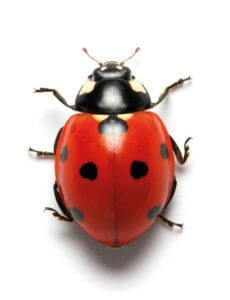Back to Nature

Whether it’s in your back garden or out in the park, enjoy getting back to nature with your kids this summer
Remember when you had the freedom to chase butterflies, build dens and splash in puddles all day long? Well now, with theme parks and almost everything else closed, it’s the perfect time to get our own children back to nature.
Spot wildlife
We hope College Lake and Tring Reservoirs will be open by the time you read this. College Lake has a two-mile circular walk where you can spot skylarks, finches and terns, as well as butterflies and, during June and July, the beautiful Cornfield Flowers. Also head to the reservoirs.
Before you go, download a bird guide, or buy ‘National Trust: Out and About Bird Spotter: A children’s Guide to over 100 different birds’, by Robyn Swift, £6.99 from Our Bookshop in Tring – and don’t forget your binoculars! See our article about attracting birds to your garden.
Get to know trees
 Can you tell the difference between one type of tree and another? Look closely at their leaves, take bark rubbings and see if you can work out what’s what. Learn about the importance of bark and why the leaves change colour on some and not others. Look for trees with spaces big enough to climb into, or ones with great branches for climbing up.
Can you tell the difference between one type of tree and another? Look closely at their leaves, take bark rubbings and see if you can work out what’s what. Learn about the importance of bark and why the leaves change colour on some and not others. Look for trees with spaces big enough to climb into, or ones with great branches for climbing up.
* Grab a copy of Westonbirt Arboretum’s Tree Spotter’s Guide by Dan Crowley, £8.99, from Our Bookshop in Tring
Go geo-caching
If you haven’t tried geo-caching before, you’re in for a treat!
A geocache is a small waterproof box hidden outdoors. Geocachers look for the hidden goodies using GPS with co-ordinates downloaded from the geocaching website, or through a free geo-caching app. The geocaches contain items to discover, and if you take any treasure away you’re expected to replace it. Go to www.geocaching.com to find your nearest site. Enter the co-ordinates into your GPS, then follow them to the treasure. Once there, fill out the log book and return it to its hiding place.
Build a den
Head into the woods and build a den like Eeyore! Collect lots of long branches and sticks and build them up against a tree. Once you’ve got a basic wigwam structure, fill in the gaps with twigs and leaves. To make it really comfortable, find a log for a seat!
Collect bugs
 A good way of teaching children that bugs are fascinating and not for stamping on is to get them to study them in greater detail. The easiest way to do this is with an insect ‘pooter’. This is basically a jar with two straws so you can ‘vaccum’ the insect into the jar without touching it, inspect it, and then gently release it.
A good way of teaching children that bugs are fascinating and not for stamping on is to get them to study them in greater detail. The easiest way to do this is with an insect ‘pooter’. This is basically a jar with two straws so you can ‘vaccum’ the insect into the jar without touching it, inspect it, and then gently release it.
Find interesting bugs under branches, beneath tree bark, under rocks and stones; shake branches, and dig down into the earth.
Grow something
If you have even a small patch of ground for growing something, let the kids get involved. Dig it over, plant some seeds, and get them to water it every day and watch it grow. You’ll be amazed how much more likely they are to eat something they’ve grown from seed!
Tring Garden Centre and Woods in Berkhamsted both have a wide selection of seeds from flowers to vegetables, and are offering delivery.
Make a collage
The collage-making itself might not be done outside, but you could spend hours collecting bits and pieces – leaves, twigs, pinecones, berries – to make a collage with once you get home.
Race snails
It’s not exactly fast-paced but it can be great fun! Look for snails in cool, damp places, and remember their shells are their homes so handle them gently.
Mark out a circular race track around 60cm in diameter. Place snails in the centre and let them glide towards the edge. Keep the track wet and out of direct sunlight. The first snail over the line wins!
Please return the snails to where you found them.
If you’re out and about please remember to take your litter home, and be mindful of others.
For more ideas go to www.nationaltrust.org.uk
